
Allegheny City was located just across the Allegheny River from downtown Pittsburgh, PA. It is now known simply as “the North Side” (See figure 1). Allegheny was long ago absorbed by the growing city of Pittsburgh, but its memory lives on. The Civil War Tokens of six merchants are part of the numismatic legacy of Allegheny City. This article is a short history of their town.
Early History
The U.S. Census of 1810 recorded approximately 450 residents of Allegheny Town. They were mostly Presbyterian settlers who farmed and manufactured such items as glass and rope. An 1825 visitor described “… a little village called Allegheny Town, laid out upon a grand scale, but on account of the proximity of Pittsburgh, it will with difficulty attain any importance.”
The population had grown to just 2,800 by 1830. Local industry now included paper and cotton mills. The growing economy attracted an influx of immigrants, mostly German and some Irish. Buy 1840 the town held 10,000 people, and was renamed Allegheny City.
There were many public improvements in the years leading up to the City War. Additional streets were paved, and old wooden bridges were replaced with suspension structures. Just after the U.S. victory in the Mexican-American War, a new set of streets was laid out. They bore names commemorating famous people and places of the war, such as Palo Alto, Resaca, Monterey, and Buena Vista. Many fashionable homes were built there.

Civil War
Abraham Lincoln stopped in Allegheny City on the way to his inauguration in 1861. The City continued to grow as its mills turned out valuable materials for the war effort. Civic improvements continued even as the war raged in the South. In 1863 the City acquired its first steam fire engine, and dedicated a new Market House, called the finest in the nation.

In 1864 a Sanitary Fair was held to raise money for the “subsistence and hospitalization of Union Soldiers and their dependents.” The organizers requested donations of things which could be “eaten, worn, sold, or were curious to look at.” A new City Hall building was nearly complete, and it was decided to tear down the old Town House ahead of schedule to make room for the Fair. City Council declared that a photograph of the historic structure be taken and 200 copies be given to the Fair, presumably to be sold as souvenirs.
The Sanitary Fair opened on June 1st, 1864. Buildings included Floral Hall, Exhibition Hall, Mechanics Hall, Ladies Bazaar, and the Refectory. The Fair raised $363,000 for the soldiers.
Famous Residents
One aspiring immigrant to Allegheny City was a 13-year-old boy named Andrew Carnegie. He arrived with his parents and elder brother in 1848, fleeing intolerable economic conditions in their home of Dunfermline, Scotland. Young Carnegie took a job as a “bobbin boy” in a local textile mill at $1.20/week. In classic rags-to-riches fashion, he rose through a series of jobs and business dealings to build Carnegie Steel (which later became U.S. Steel). In 1900 he sold his interest in the company, and retired the richest man on earth. Carnegie’s philanthropy built public structures around the world. The Carnegie Free Library of Allegheny opened in 1890.

Composer Steven Collins Foster lived 10 years in Allegheny City. (His father was mayor in 1842 and 43.) Many of his most famous songs were composed during those years, including: Jeannie With the Light Brown Hair, My Old Kentucky Home, Camptown Races, Old Folks at Home, and Oh, Sussanah.
Internationally famous impressionist painter Mary Cassatt lived in Allegheny City for a time. Her father was mayor in 1846. From 1902 to 1912 noted author and playwright Mary Roberts Rinehart made Allegheny City her home. Her most famous novel, “The Circular Staircase,” was published in 1908. In 1915 she began covering the war in Europe for the Saturday Evening Post. Authors Willa Cather and Gertrude Stein also lived for a time in Allegheny City.
Sports fans should know another famous “resident” of Allegheny City, The Pittsburgh Pirates Base Ball Club, who built Exposition Park in 1882.


Annexation
Pittsburgh politicians long yearned to control Allegheny City. Allegheny City, of course, clung tightly to her independence, and would have no part of her crowded neighbor across the river. As early as 1867 Pittsburgh moved to incorporate outlying districts. An October election polled residents of several areas north of the Allegheny River (including Allegheny City). The majority voted against joining Pittsburgh. There were two more failed attempts in the 1890’s. Bills introduced by Pittsburgh politicians were declared unconstitutional by the County Common Pleas Court.
By 1905 however, the political climate began to change. Proponents of Pittsburgh’s annexation scheme had the ear of the new Governor, Samuel W. Pennypacker. A bill was rushed to the State Legislature, and passed on February 7, 1906. The bill allowed for two municipalities to merge if agreed to by a majority of the ENTIRE population of the two areas. An election was quickly held, and Pittsburgh having a far greater population than its neighbor, the outcome was inevitable. The vote was two-to-one in favor of annexation, despite the wishes of 70% of Allegheny City voters.
Allegheny was proud of her existence, and her death struggles were severe. A series of appeals went all the way to the U.S. Supreme Court; all failed. On December 6, 1907, by order of the Supreme Court of Pennsylvania, the consolidation was complete. Allegheny City was no more.
Recent History
Like many urban areas, Old Allegheny fell on hard times after World War II. Many upper and middle-class residents moved out to the suburbs. Their once-elegant homes fell into disrepair, as poorer residents moved in.
Ambitious urban renewal projects of the 1960’s wiped out many links to the area’s past. The old Market House was razed, and several streets were moved or eliminated to make way for new highways, traffic circles, office buildings, and a shopping mall. Three Rivers Stadium rose on the site of the old Exposition Park.
Many old landmarks were spared, however. The Carnegie Library building stands tall, its tower clock still ticking after nearly a hundred years. The Mexican War Streets area is thriving, and are now some of the most desirable in the city. The Reinhart house has been beautifully restored as well. It sports a lovely spiral staircase, and is occasionally open for tours.
Allegheny City may be gone, but its legacy lives on.
Wayne K. Homren ![]()
Numismatic Specimens
George and Melvin Fuld list 6 different merchants who issued storecards during the Civil War era. Of those six merchants, there are 53 different varieties. The table below outlines all issuers and each variety.

Illustrated below are two examples. The first specimen pictured issued by William Carson, Leather Merchant and is cataloged as Fuld PA13A-1a.
Struck in copper, the specimen is R-6 in rarity. This particular specimen is approximately Extra Fine in grade.

The second specimen pictured was issued by partners Gregg & Dalzzel, who operated a planing mill. Cataloged as Fuld PA13C-1a, it was also struck in copper.
This variety is R-5 in rarity. It is approximately MS-62 in grade.

Notes and Sources
The text of this article originally appeared in The Civil War Token Society’s ‘The Copperhead Courier,’ Summer 1984, volume 18, Number 2.
- Correspondence with numismatist Sterling Rachootin
- Correspondence with numismatist Lawrence Dziubek
- Archives of the Western Pennsylvania Historical Society of Pittsburgh
- ‘A Chronological History of Old Allegheny City, Penna.,’ Adrian J. Briggs, compiled for The Allegheny City Society, Pittsburgh, PA, 1956, Revised ©1969.
- ‘Andrew Carnegie and the Rise of Big Business,’ Harold C. Livesay, Little Brown and Co., 1975
- ‘Old Allegheny, by Charles W. Dahlinger,’ reprinted from the Western Pennsylvania Historical Magazine, Pittsburgh, PA. 1918
- ‘The North Side Story,’ Jack McKee, in the 1960-61 Directory published by the North Side Chamber of Commerce, Pittsburgh, PA. ©1961
- ‘1872 Atlas of the Cities of Pittsburgh, Allegheny, and the Adjoining Boroughs,’ Historic Pittsburgh website
- U.S. Civil War Store Cards Second Edition, George and Melvin Fuld, Quarterman Publications, ©1975
- Civil War token images courtesy of Steve Hayden Auctions, Civil War Tokens and More
- The Carnegie Library of Pittsburgh Digital Archives
- The Library of Congress Digital Archives
- Allegheny City and Its Tokens – Gone But Not Forgotten - November 6, 2014


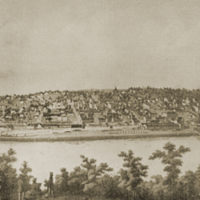
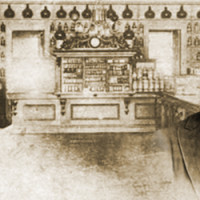
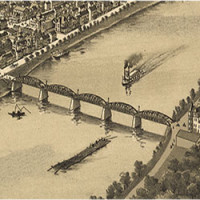
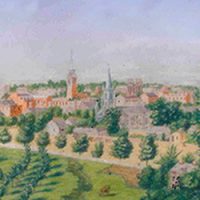
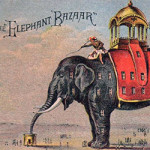
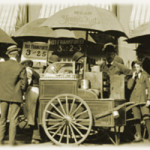
This is such an informative collection of information, I am at a loss for words. I commend you for your efforts in sharing this.
Thanks for the kind words Scott.
Hello Mr. Homren,
Thank you for your work here. We found a 1891 Gusky Pittsburgh Exposition trade medal in a small town called Sabula in Central Pennsylvania. It has led to a research project into J.Gusky and the Pittsburgh Exposition in Allegheny. I was wondering if these medals were created for all of the exhibitors of this trade show or was it unique to Gusky’s Department store? If you are interested I can send photos of the medal.
Thank you,
Harry Lieb
I don’t know any more about medals created for the Exposition, but i would be interested in seeing photos of your Gusky medal.